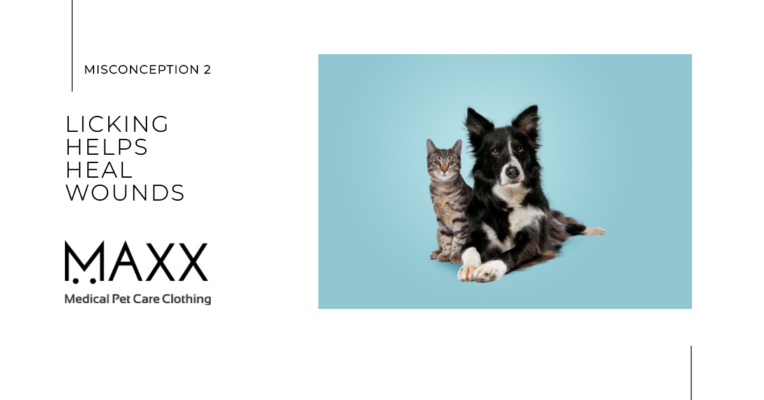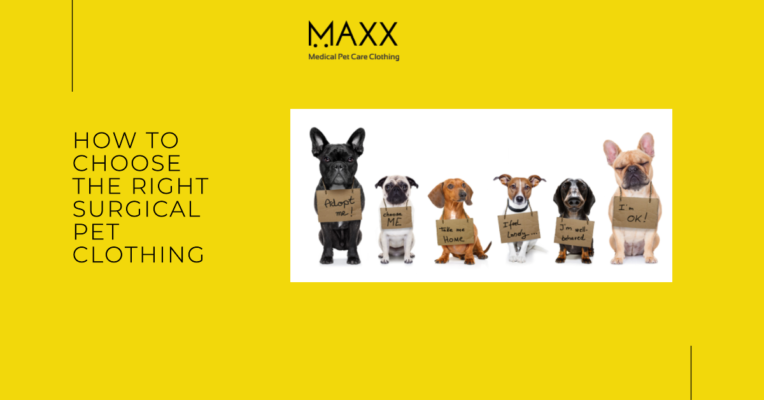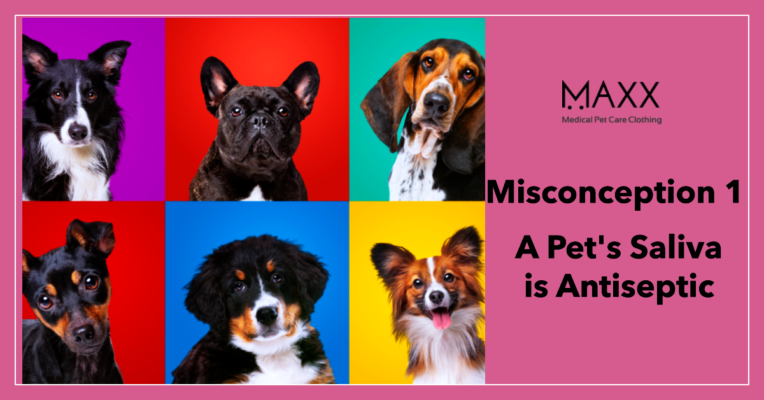MAXX Pet Blogs
Licking and scratching a wound can delay the healing process and even lead to infection. But there’s a solution that not many pet owners know about.
Common Misconceptions on Licking and Scratching a Wound by Your Pet and How Surgical Pet Clothing Plays an Important Role
Table of Contents
- Introduction
- The Misconceptions Surrounding Licking and Scratching Wounds
- Pet Saliva is Antiseptic
- Licking Helps Heal Wounds
- Scratching is a Natural Behaviour
- The Dangers of Licking and Scratching Wounds
- Delayed Healing
- Infection
- Further Injury
- The Importance of Surgical Pet Clothing
- Preventing Licking and Scratching
- Promoting Healing
- Reducing the Risk of Infection
- Choosing the Right Surgical Pet Clothing
- Material
- Size and Fit
- Conclusion
- FAQs
Introduction
Pet owners often struggle to take care of their pets’ wounds, especially when it comes to stopping them from licking and scratching the affected area.
While many believe that allowing their pets to lick or scratch their wounds will speed up the healing process, this is a common misconception that can actually lead to infection or even more severe health problems.
In this article, we’ll be discussing the common misconceptions regarding licking and scratching wounds and how surgical pet clothing can play a crucial role in preventing these issues.
Misconception 1: A Pet’s Saliva is Antiseptic
Many pet owners believe that their pet’s saliva contains antiseptic properties that can help heal wounds.
However, this is not entirely true. While certain enzymes in the saliva can help break down harmful bacteria, a pet’s mouth is also filled with bacteria that can cause infections and delay the healing process.
Allowing a pet to lick its wounds can lead to more bacteria entering the wound and making the healing process even slower.

Misconception 2: Licking Helps Heal Wounds
Another common misconception is that a pet’s licking can speed up the healing process. However, licking can actually make the wound worse. A pet’s tongue is rough and can remove the scab, which is essential for the healing process. Furthermore, the constant licking can lead to further inflammation and irritation, which can also slow down the healing process.
Misconception 3: Scratching is Normal
Many pet owners believe that scratching is a normal behavior for their pets, especially if they have an itch or irritation.
However, scratching can be dangerous for wounds, especially if the wound is in a hard-to-reach area.
Scratching can introduce bacteria to the wound and make it more susceptible to infections.
The Importance of Surgical Pet Clothing
To prevent pets from licking or scratching their wounds, surgical pet clothing can be an excellent solution.
This type of clothing is designed to fit snugly around the pet’s body and prevent access to the wound.
Surgical pet clothing is made of high-quality materials that are breathable and lightweight, making it comfortable for pets to wear.
How Surgical Pet Clothing Works
Surgical pet clothing works by providing a barrier between the wound and the pet’s mouth or paws.
The clothing is designed to fit snugly around the pet’s body, preventing access to the wound.
It also helps to keep the wound clean and dry, which is essential for the healing process.
Types of Surgical Pet Clothing
There are several types of surgical pet clothing available, including body suits, recovery collars, and bandages.
Body suits are designed to cover the entire body of the pet, while recovery collars are designed to fit around the pet’s neck. Bandages are used to cover specific areas of the body and are secured in place with surgical tape.

Benefits of Surgical Pet Clothing
The benefits of using surgical pet clothing are numerous. It can help prevent pets from licking or scratching their wounds, which can lead to infections or other health issues.
It can also speed up the healing process by keeping the wound clean and dry.
Additionally, surgical pet clothing can be an excellent way to reduce the risk of injury to other pets or humans that may come into contact with the wound.

How to Choose the Right Surgical Pet Clothing
When choosing surgical pet clothing, it is essential to consider the type of wound your pet has and its location. For example, a body suit may be more appropriate for a large wound on the torso, while a recovery collar may be more appropriate for a wound on the neck or head. It is also important to choose high-quality surgical pet clothing that is breathable and
durable, ensuring that your pet stays comfortable while wearing it. You may also want to consider the size and fit of the clothing, as it should fit snugly but not be too tight or restrictive.
Conclusion
In conclusion, it is essential to understand the misconceptions surrounding licking and scratching wounds and the importance of using surgical pet clothing to prevent these issues. While many pet owners may believe that their pet’s saliva is antiseptic or that licking helps heal wounds, this is not the case, and it can actually lead to more harm than good. By using surgical pet clothing, you can help your pet heal more quickly and prevent further complications.
FAQs
- Can surgical pet clothing be used for any type of wound?
- Surgical pet clothing can be used for many types of wounds, but it’s essential to choose the right type of clothing for your pet’s specific needs.
- Is surgical pet clothing easy to put on and take off?
- Yes, surgical pet clothing is typically designed to be easy to put on and take off, making it convenient for pet owners.
- Can surgical pet clothing be used for cats as well as dogs?
- Yes, surgical pet clothing is available for both cats and dogs.
- How long should I keep surgical pet clothing on my pet?
- The length of time that surgical pet clothing should be worn depends on the severity of the wound and your veterinarian’s recommendations.
- Can surgical pet clothing be washed and reused?
- Yes, surgical pet clothing can typically be washed and reused, although it’s essential to follow the manufacturer’s instructions for cleaning and maintenance.


